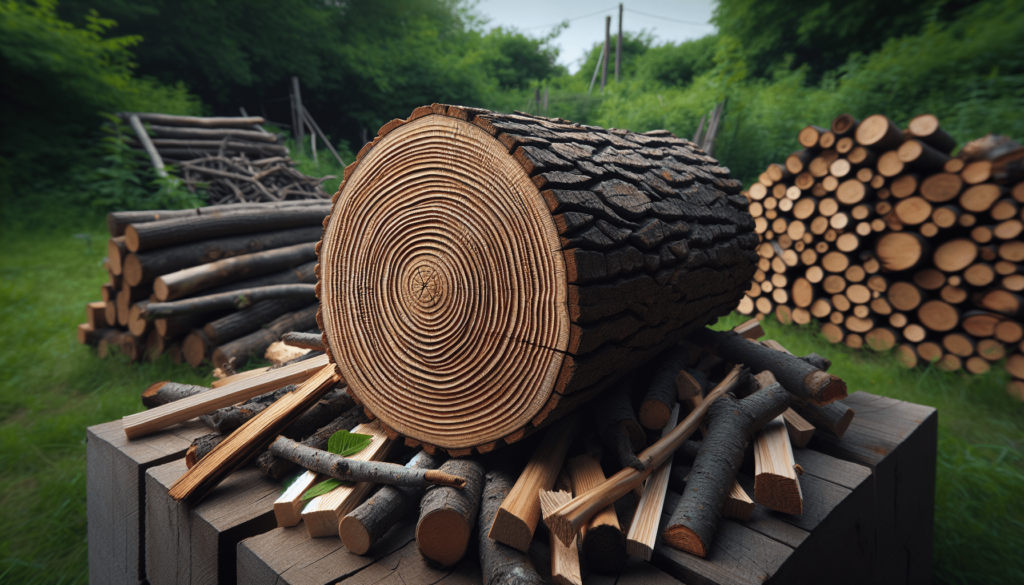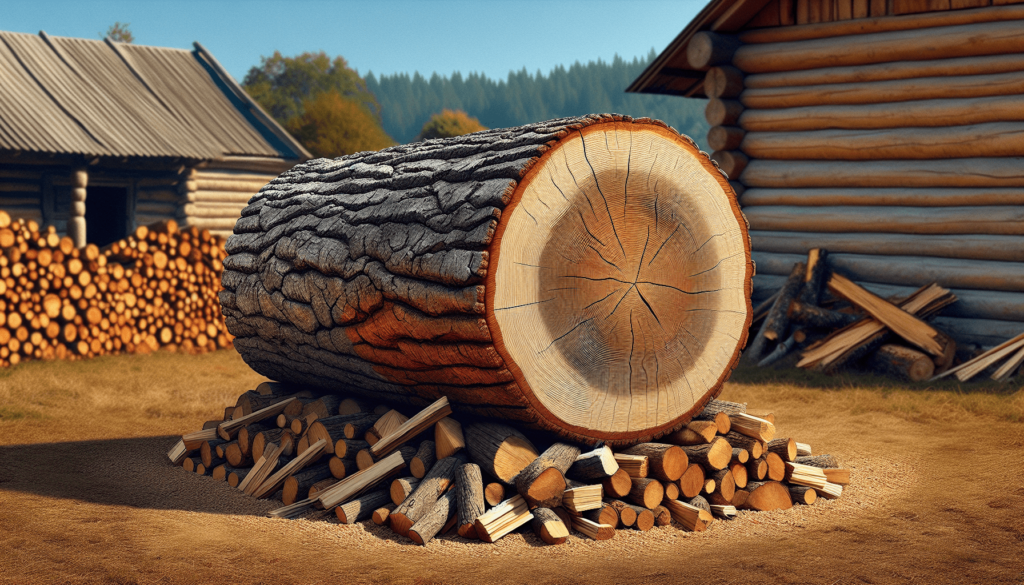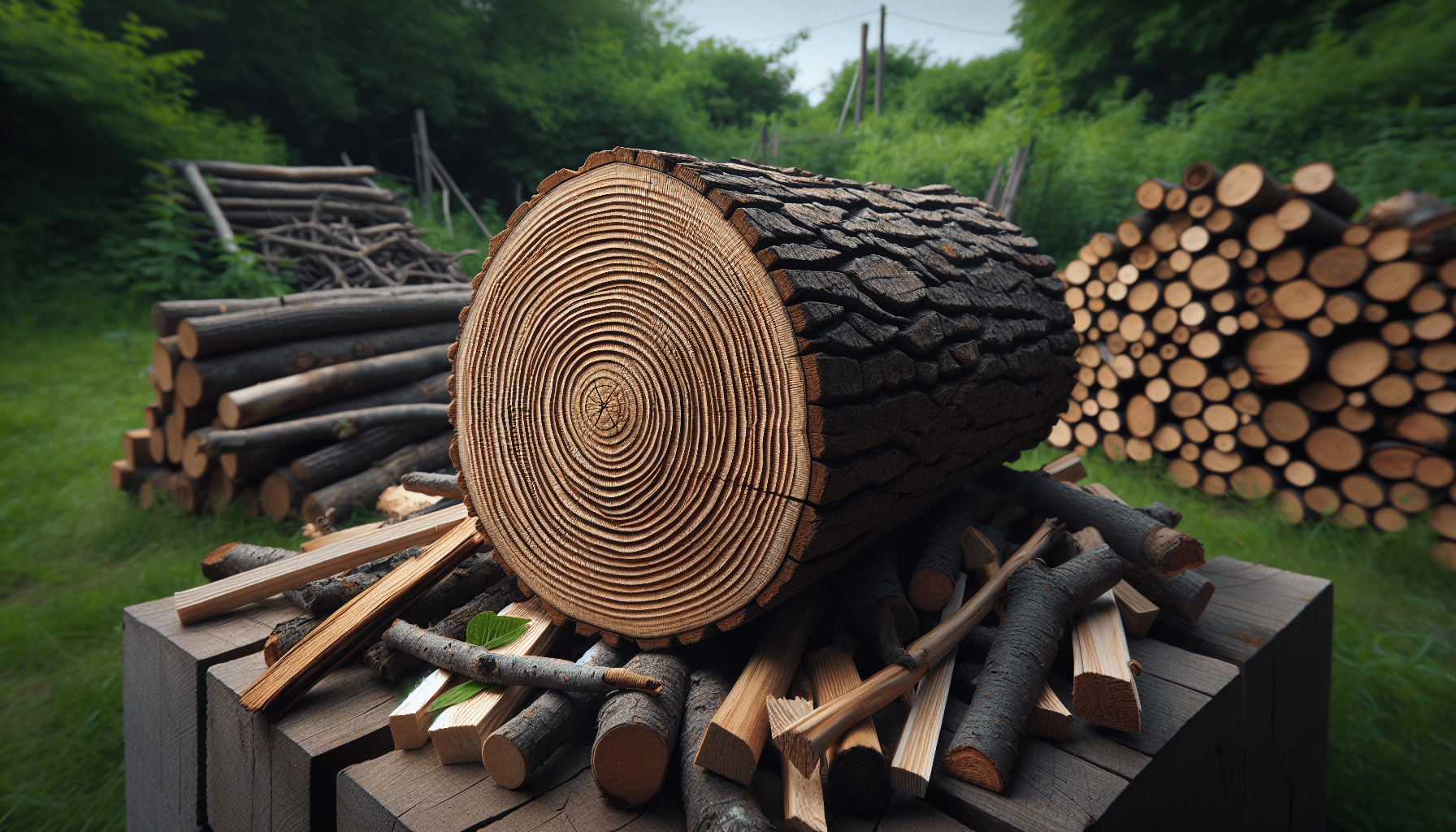You know, sometimes it seems like getting a good fire going can be a bit of a mystery, especially when the wood just doesn’t want to catch. Trust me, there’s a science behind why wood can be so stubborn. From its moisture content to how tightly its fibers are packed, several factors play into why some logs put up a fight before warming up your living room. Understanding these elements can save you some frustration the next time you’re trying to light a cozy fire. Why is wood so hard to burn?
Why Is Wood So Hard to Burn?
Ever huddled around a campfire, shivering because the wood just won’t catch fire? If you’ve experienced this, you’re not alone. You’d think that tossing a hunk of wood into a flickering flame would result in a roaring bonfire, right? However, reality has other plans, and you end up blowing on embers, poking kindling, and maybe even questioning the meaning of life itself. Today, we’re diving into the labyrinthine complexities of why wood can be so darn tough to burn.

The Basic Science of Burning
First things first—why does anything burn at all? When materials burn, they undergo a chemical reaction known as combustion. It requires three elements: heat, fuel, and oxygen. Remove one of these, and you’ve got yourself a cold, dark night.
Combustion can be broken down into several stages:
- Ignition: The point where the material (wood, in this case) starts to burn.
- Sustained Combustion: The fire maintains itself and continues to burn.
Simple enough, right? Well, wood throws a wrench into this straightforward process by being just complicated enough to make things interesting.
Moisture: The Hidden Enemy
Moisture in the wood is one of the biggest reasons why you might struggle to get your fire going. Let’s break it down:
| Type of Wood | Moisture Content (%) | Difficulty to Burn |
|---|---|---|
| Green Wood | 30% + | Very High |
| Seasoned Wood | 20% | Moderate |
| Kiln-Dried | <10%< />d> | Low |
Green wood contains a significant amount of water, making it extremely difficult to ignite. Seasoned wood has been left to dry for a period, usually six months to a year. Kiln-dried wood is dried in an oven, leaving very little moisture. The lower the moisture content, the easier it is to burn.
Wood Density: The Not-So-Obvious Culprit
Different types of wood have different densities, which can equally affect how they burn. Denser woods take longer to catch fire but burn longer.
| Wood Type | Density (kg/m³) | Combustion Rate |
|---|---|---|
| Balsa (Soft) | 160 | High |
| Pine (Moderate) | 500 | Moderate |
| Oak (Hard) | 750 | Low |
Oak, a denser hardwood, will take its sweet time to ignite but will provide longer-lasting heat once it does. On the flip side, softwoods like pine catch fire quickly but burn out just as fast. Choose your firewood according to your patience and needs.
The Role of Volatile Compounds
As if moisture and density weren’t enough, let’s delve into volatile organic compounds (VOCs) in wood. These are compounds that evaporate easily and can catch fire at relatively low temperatures. In the initial stages of burning, these VOCs will combust, leading to easier ignition. However, if the wood has been improperly stored or processed, these compounds can make things tricky. They can combust too quickly, leading to inefficient burning or erratic flames.
The Importance of Proper Air Circulation
You know those cowboy movies where they start a fire with a single match? Yeah, that’s Hollywood for you. In the real world, proper air circulation is crucial for sustained combustion. Without enough oxygen, even the driest wood won’t burn correctly. And conversely, too much wind can blow out your fire before it even has a chance to get started.
Think of your fire like it’s a needy friend who requires just enough attention—not too little, not too much. You need to strike a balance. Basically, this means arranging your firewood to allow air to circulate freely. The “teepee” or “log cabin” methods of stacking wood are popular because they create gaps that allow air to flow and feed the fire.
Types of Wood: Different Strokes for Different Folks
Not all wood is created equal when it comes to burning. Here’s a rundown of some common types:
| Wood Type | Best Use | Notes |
|---|---|---|
| Pine | Kindling | Burns quickly, crackles |
| Oak | Long-duration fire | Slow to ignite |
| Maple | Balanced burns | Good all-rounder |
| Birch | Quick heat | Burns fast and hot |
Choosing the right type of wood can save you a lot of headaches (and potentially cold evenings).

Prepping Your Wood: The Unsung Hero
Let’s talk about the often-overlooked aspect of proper wood preparation. You can’t just chop down a tree and throw it into the fireplace. Well, you technically could, but you’d be setting yourself up for failure. Here are some best practices:
Splitting Wood
Splitting wood into smaller pieces increases its surface area, making it easier to light. Also, split wood dries out faster.
Storing Wood
Proper storage is crucial. Keep your firewood off the ground and covered if possible. This prevents it from absorbing groundwater or getting soaked in the rain.
Seasoning Wood
Even if you don’t own a kiln, letting your wood season naturally will yield better results. Six months to a year is a good rule of thumb for most wood types.
The Psychological Aspect: Expectation vs. Reality
Now, let’s dive into the psychology behind wood burning. If you’ve ever been frustrated by your inability to light a fire, you’re not alone. We’ve all been there, cursing nature while shivering in the cold. The frustration comes from a gap between expectation and reality. Firemaking is not as simple as TV makes it look, and once you accept that, you’re halfway there.
The Learning Curve
Understand that becoming proficient at burning wood is a skill that takes time to hone. Don’t beat yourself up over early failures. Think of them as stepping stones toward becoming a fire-starting savant.
Fire Starters: Your Best Friend
If all else fails, there’s no shame in turning to fire starters to give you a helping hand. You can buy them from the store or make your own from household materials like wax, egg cartons, and dryer lint. They can get your kindling caught and keep the fire going long enough for the larger logs to catch.
Modern Solutions: Is Technology the Answer?
In our modern world, it feels like there should be a widget or gadget to simplify every task, including fire starting.
Firestarter Logs
These are compressed sawdust and wax logs that burn consistently. They take the guesswork out of the equation but cost more per log.
Electric Fire Starters
Yes, they exist! These are essentially electric blowtorches that can start a fire in seconds. While effective, they’re a bit over-the-top for your casual fire-making needs.
The Environmental Factor: Burning Responsibly
Burning wood has environmental implications. Here’s a quick guide to doing it responsibly:
- Use Seasoned Wood: To minimize smoke and particulate emissions.
- Avoid Painted or Treated Wood: They release toxic chemicals when burned.
- Build Efficient Fires: Proper stacking and airflow minimize smoldering, reducing smoke.
Putting it All Together: The Perfect Fire
So, how do you actually build a fire that’s not only easy to light but also long-lasting and efficient?
Step-by-Step Guide:
- Gather Your Materials: Collect kindling, fire starters, and a mix of hardwood and softwood.
- Build Your Structure: Arrange the kindling in a teepee or log cabin structure, ensuring air can flow.
- Ignite: Use a match or lighter to ignite the fire starter.
- Feed the Fire: Gradually add larger pieces of wood, alternating between hardwood and softwood to maintain a steady burn.
Troubleshooting Common Problems
Even with all the knowledge and preparation, fires can be finicky. Here are some common issues and their solutions:
| Problem | Possible Cause | Solution |
|---|---|---|
| Fire Won’t Start | Wet wood or poor ventilation | Use seasoned wood and proper stacking technique |
| Fire Smokes Excessively | Unseasoned wood or poor airflow | Ensure wood is dry and stack wood to improve air circulation |
| Fire Burns Out Quickly | Using only softwood or insufficient fuel | Add hardwood for sustained burning and more kindling to feed the fire |
A Final Word: The Joy of a Well-Burned Fire
Though it can be a challenging endeavor, the satisfaction of a well-burned fire makes it worth the effort. The warmth, the crackle, and the mesmerizing dance of flames are the ultimate reward. So next time you find yourself struggling, remember that good things come to those who are willing to gather, split, and season their wood.
If you ever asked, “Why is wood so hard to burn?” now you know it’s not just one thing—it’s a myriad of factors, from moisture to density and even the psychological aspect. But with the right knowledge and a bit of patience, you’ll be a fire-starting pro in no time. Happy burning!
Feel free to share your fire-starting tips or frustrations below. We’re all in this together, shivering around the flame.

